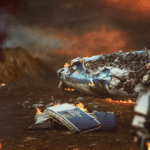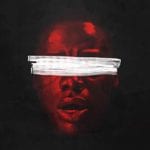 Music
Music  Music
Music  History
History 10 Less Than Jolly Events That Occurred on December 25
 Weird Stuff
Weird Stuff 10 Funny Ways That Researchers Overthink Christmas
 Politics
Politics 10 Political Scandals That Sent Crowds Into the Streets
 Weird Stuff
Weird Stuff Ten Bizarre Facts About The Doge Meme
 Our World
Our World 10 Ways Your Christmas Tree Is More Lit Than You Think
 Movies and TV
Movies and TV The 10 Coolest Stars to Set Sail on The Love Boat
 History
History 10 Things You Didn’t Know About the American National Anthem
 Technology
Technology Top 10 Everyday Tech Buzzwords That Hide a Darker Past
 Humans
Humans 10 Everyday Human Behaviors That Are Actually Survival Instincts
 Music
Music 10 Surprising Origin Stories of Your Favorite Holiday Songs
 History
History 10 Less Than Jolly Events That Occurred on December 25
 Weird Stuff
Weird Stuff 10 Funny Ways That Researchers Overthink Christmas
Who's Behind Listverse?

Jamie Frater
Head Editor
Jamie founded Listverse due to an insatiable desire to share fascinating, obscure, and bizarre facts. He has been a guest speaker on numerous national radio and television stations and is a five time published author.
More About Us Politics
Politics 10 Political Scandals That Sent Crowds Into the Streets
 Weird Stuff
Weird Stuff Ten Bizarre Facts About The Doge Meme
 Our World
Our World 10 Ways Your Christmas Tree Is More Lit Than You Think
 Movies and TV
Movies and TV The 10 Coolest Stars to Set Sail on The Love Boat
 History
History 10 Things You Didn’t Know About the American National Anthem
 Technology
Technology Top 10 Everyday Tech Buzzwords That Hide a Darker Past
 Humans
Humans 10 Everyday Human Behaviors That Are Actually Survival Instincts
Top 10 Lovecraftian Stories Not Written by Lovecraft You Should Read
H. P. Lovecraft’s influence on literature is undeniable. Stephen King, the current king of horror, describes him as “the twentieth century’s greatest practitioner of the classic horror tale.” His influence also extends beyond the literary world. For instance, his work inspired some of the art in H. R. Giger’s Necronomicon (named after Lovecraft’s Necronomicon), which went on to be the basis of the design for the xenomorphs in Alien (1979).
Lovecraft’s stories fall into the genres of “weird fiction” and “cosmic horror,” forming the basis of the Cthulhu Mythos. If you are unfamiliar with Lovecraftian horror, then think forbidden knowledge, behemoth creatures with tentacles, and the helplessness of humanity in the face of cosmic power. He is a horror icon, to be sure, but he was also a white supremacist, and his views bled into his fiction. Thankfully, his Mythos has been expanded by other authors using his characters, settings, and themes. So read on if you’re in the mood for a more modern take on cosmic horror.
Related: 10 Terrible Stories By Famous Authors
10 The Fisherman (2016), John Langan
The Fisherman is a Lovecraftian story of people biting off more than they can chew. We follow two widowers, Dan and Abe, who have bonded over their shared passion for fishing. They hear rumors about Dutchman’s Creek, which might just hold the remedy to their grief, and they find themselves drawn in despite their skepticism.
With shades of Lovecraft’s The Dunwich Horror (1929) and Stephen King’s Pet Sematary (1983), The Fisherman is a dark tale of loss and sinister power. It begins as a harrowing exploration of grief, but later in the novel, things get increasingly bizarre. One reviewer declares that “I cannot think of another horror novel that caused me anxiety-ridden, sleepless nights.” Fans of horror will want to dig into this one.[1]
9 The Dream-Quest of Vellitt Boe (2016), Kij Johnson
Whether you love or hate Lovecraft’s work, there is a good chance you’ll enjoy The Dream-Quest of Vellitt Boe. Johnson wrote the novella in response to Lovecraft’s The Dream-Quest of Unknown Kadath, which was published posthumously in 1943. It is the longest story in his Dream Cycle, which is more whimsical than his usual horror fare and centers on a magical realm that master dreamers, who are always male, can visit in their sleep. In Lovecraft’s story, we follow dreamer Randolph Carter, but Johnson flips this perspective by following Vellitt Boe, a female native of the Dreamlands.
Johnson’s version of the story is as much a tribute to Lovecraft as a critique of his lack of female characters. In an interview, she says that “There’s so much going on with Lovecraft that can be explored or can be countered. You can reply to Lovecraft in so many ways.” While featuring commentary on Lovecraft’s view of women, Johnson’s novella is also a wonderful expansion of the magical world he created. Previous knowledge of the original story, while not necessary, will enhance a reading of Johnson’s version.[2]
8 Meddling Kids (2017), Edgar Cantero
Edgar Cantero states that his novel started life as a high concept: “Famous Five meets Cthulhu.” From there, he “liked the sound of a gang of former teen detectives reuniting as broken adults because one of their childhood cases was not as innocent as it looked.” The pitch was rebranded as Scooby-Doo meets Lovecraft when it became evident that American audiences were unfamiliar with Enid Blyton’s books.
While the mysteries in Famous Five and Scooby-Doo sometimes border on the supernatural, they are almost always resolved by a mundane explanation. Meddling Kids goes in the opposite direction and leans into the supernatural evils that can be found in Lovecraft. If you are looking for the hijinks of Scooby and gang mixed with the forbidden knowledge and inhuman creatures of Lovecraft, then this is the book for you.[3]
7 The City We Became (2020), N.K. Jemisin
The City We Became is a fantasy novel which developed from N.K. Jemisin’s earlier short story The City Born Great. In the book, every major city in the world is embodied in a human avatar; they are simultaneously an individual person and also a vessel for everything in the city. After the avatar of New York City falls into a supernatural coma, new avatars of the five boroughs must join forces to fight the common threat.
This threat, called the Enemy, sometimes appears as an eldritch monster with tentacles, but it takes many other forms too. Jemisin says that the book is “basically me mentally and spiritually engaging with the whole idea of how so much fantasy owes itself to Lovecraft while overlooking his glaring flaws.” The Enemy is not just a Lovecraftian monster; it is a representation of Lovecraft himself and the racism in his works.[4]
6 The Innsmouth Legacy series (2014-2018), Ruthanna Emrys
This series starts with the novella The Litany of Earth (2014), which is an updated take on Lovecraft’s The Shadow Over Innsmouth (1936), and continues with two full-length novels, Winter Tide (2017) and Deep Roots (2018). The story is set in a universe where Lovecraft’s monsters are real, and the U.S. government has forced them into internment camps. We follow from the point of view of one of these so-called monsters. Aphra and her people are versions of Deep Ones in that they appear human at the start of their lives but then transform into Lovecraftian fish-like creatures.
This twist on Lovecraft’s monsters gives them nuance and humanity, despite not being humans. For Ruthanna Emrys, the downsides and the appeal of Lovecraft are interconnected. In an interview with The Verge, Emrys explains that “I’m terrified of people who think I’m a monster. Lovecraft gives me a window into what that looks like,” and yet “his characters are constantly being forced to see things from the Other’s point of view.”[5]
5 The Mist (1980), Stephen King
Lovecraft’s influence can be felt throughout many of King’s works, but the novella The Mist directly portrays eldritch terrors. Our narrator, David Drayton, is trapped in a supermarket with his young son when an otherworldly mist rolls into town. Our characters have to survive not only the Lovecraftian creatures in the mist but also the aggression of other survivors.
Frank Darabont wrote and directed a successful film adaptation in 2007, which starred Thomas Jane as David. While it was largely faithful to the novella, Darabont came up with a much darker ending which King loved: “I thought that was terrific. And it was so anti-Hollywood—anti-everything, really! It was nihilistic. I liked that.” Ten years later, it was adapted again, this time into a TV series that was not well received. The show’s failure “is directly tied to the decision to jettison the Lovecraftian monstrosities,” monstrosities which King and Darabont had managed to portray successfully.[6]
4 Ring Shout (2020), P. Djéli Clark
Ring Shout is a novella set in Georgia that follows Maryse Boudreaux, who hunts and kills demonic entities which have been summoned by the Ku Klux Klan. Clark mixes the true history of the Jim Crow South with the supernatural horror of Lovecraft to create a story that explores how people can be turned into monsters (in the figurative sense, not the Lovecraftian sense). Clark is also a master of body horror, conjuring up “images and beasts Guillermo del Toro would fall all over himself to help create on screen.”
Like many of the authors on this list, Clark grappled with both the importance and poison of Lovecraft’s legacy. He declares that his writing “is not an ode to Lovecraft, it is more so a jab.” Clark borrows the good elements of Lovecraft’s stories, such as his eldritch monsters, and turns the bad elements on its head.[3]
3 The Courtyard (2003), Neonomicon (2010), and Providence (2015), Alan Moore
Comic book writer Alan Moore is best known for Watchmen (1986-1987), but he has also, along with Jacen Burrows as the illustrator, released comics that take place in the Lovecraft universe. Moore began experimenting with Lovecraft when he was asked to contribute to a prose anthology. His story, titled “Yuggoth Cultures,” treated “each of Lovecraft’s sonnets as a fungal spore placed in an individual Petri dish, taking its title or its imagery and seeing what might usefully be grown from it.” This spawned an engagement with Lovecraft’s works which spanned the rest of his career.
Based on Moore’s work, Antony Johnston developed The Courtyard into a comic in 2003. Moore then took over the writing, and Neonomicon was published from 2010 to 2011. Providence wrapped up the story between 2015 and 2017. Moore’s comic series, rather than merely subverting Lovecraft’s ideas, is a metacommentary on both Lovecraft himself and his body of work. It is best to be familiar with Lovecraft’s work before diving into the comics as they engage very heavily with Lovecraft’s canon.[8]
2 The Ballad of Black Tom (2016), Victor LaValle
Victor LaValle’s award-winning novella revisits Lovecraft’s The Horror at Red Hook (1927) from the viewpoint of a Black man. Set in Harlem in 1924, the story is about hustler Tommy Tester being recruited by reclusive millionaire Robert Suydam for a scheme involving Lovecraft’s Great Old Ones. The story combines cosmic horror and forbidden knowledge with commentary about racism in America. A TV adaptation of the novella is currently in production at AMC, with LaValle as co-executive producer.
In an interview with Vox, LaValle explains that because Lovecraft’s influence has already saturated popular culture, we should “keep the best of it and identify the worst of it.” This process led LaValle to craft a story that addresses the issues in Lovecraft’s horror but also makes use of the cosmic terror in his stories.[9]
1 Lovecraft Country (2016), Matt Ruff
Published on the same day as The Ballad of Black Tom, Matt Ruff’s Lovecraft Country is made up of interconnected short stories which focus on Black characters. We follow Atticus Turner and his friends and family as they encounter a secret society of occultists, otherworldly horrors, and the real-life horrors of Jim Crow-era America.
One reviewer describes the book as “a kind of exorcism” of Lovecraft’s racism. Another states that it “is in part a valentine to Black nerdery and the ability of readers of color to find wonder and transcendence in a genre that rarely included a place for them.” Ruff’s novel confronts the reality of racism in America head-on, but it also figures the Black characters as heroes who go on sci-fi adventures. HBO adapted the novel into a TV series in 2020, starring Jonathan Majors as Atticus, but despite being well received, it was canceled after one season.[10]








